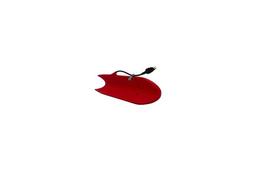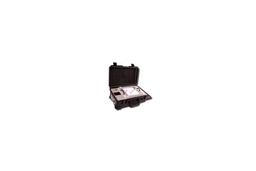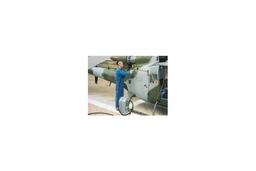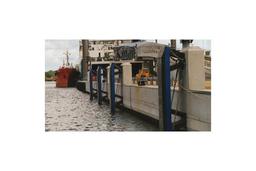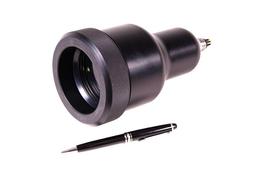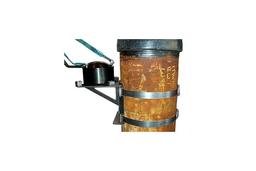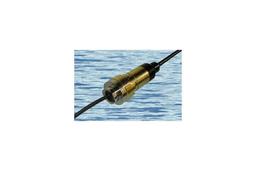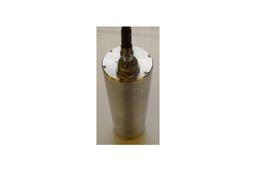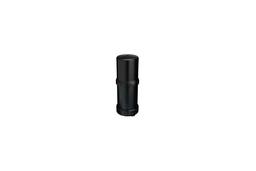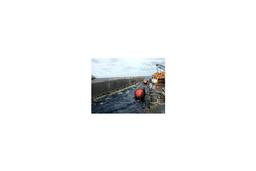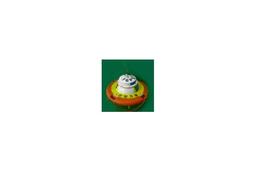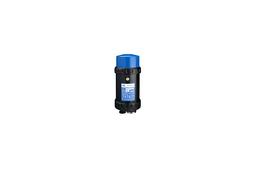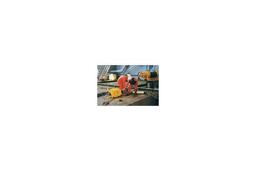


The drill riser provides a conduit for the drill string and drilling fluids from the ocean floor to the rig. This has significant weight which must be supported by its own structure and ultimately by the drilling vessel. In order to reduce this weight in water to a more manageable amount, discrete buoyancy units in the form of Drill Riser Buoyancy Modules (DRBMs) are fitted along the length of the riser.
Each buoyancy module consists of elongate cylinders which are supplied in two or three discrete elements which surround the drill riser and ancillary lines. These elements are attached together using either an internal fastener or by external circumferential straps.
The internal fastener system consists of four threaded stainless steel (or titanium) studs or bolts that pass through the elements, held together by a washer/locknut arrangement. Recesses are provided to accomodate the stud/bolt system. Strengthening plates are provided to support and distribute the loads.
The external fastening system consists of Kevlar straps and tensioning assemblies which are placed around the outside of the elements. Recesses are provided to guide the straps around the outside surface of the elements as well as to minimise their exposure and possible damage during handling operations.
Circumferential raised support pads (or flexure lugs) are provided to ensure adequate clearance between the external surface of the riser and the internal surface of the modules when the riser pipe flexes during handling or installation. Additional axial recesses allow the ancillary lines to be accommodated.
Transverse recesses are provided to accommodate clamping and guidance equipment. For ease of stacking a flat surface typically 12" wide is provided on the outside surface of the buoyancy elements.
Features
Materials
The core of the buoyancy element is manufactured from low density composite syntactic foam. The composite syntactic foam is produced by blending together pure syntactic foam and Minispheres or Macrospheres.
Pure Syntactic Foam is a mixture of base polymer system and hollow glass Microspheres.
Minispheres or Macrospheres are a larger fibre reinforced composite sphere, developed to reduce the pure syntactic foam density to provide additional buoyancy to the DRBM. The pure syntactic foam bonds the mini-macrospheres together and provides support to them when subjected to hydrostatic pressures.
The composite syntactic foam is encased within a durable external skin which is an integrally moulded, resin impregnated fibre reinforced skin. In addition to giving rise to an element that is stiffer and therefore more resistant to bending, it provides a tough outer surface that provides excellent abrasion and impact resistance. This protects the underlying composite syntactic foam from damage during handling, assembly and installation.
Construction
The manufacturing process begins with the manufacture of mini-macrospheres. This process starts with unique spherical formers. Each sphere is coated with several fibre reinforced composite layers, which are progressively applied in larger tumblers. The thickness of the coating varies and is dependent upon the specific, designed application depth. Thorough quality checks (density, buoyancy, crush strength) are performed at every stage.
After a quality inspection, the mould tool is internally lined with glass fibre reinforcement and the mini-macrospheres are fed into the mould under air pressure. The moulds are vibrated to ensure as complete a fill as possible, this also ensures uniform material properties of density and structural integrity for the finished product.
The pure syntactic foam is mixed under strictly controlled conditions. This is then injected into the mould in a dedicated vacuum chamber. Filling under vacuum ensures a complete fill of the voids between the spheres. It also removes any air that may have been trapped in the mould or the final product.
The filled moulds are then placed in ovens where the curing process takes place. Temperatures are carefully monitored and controlled throughout the ramp-up and cool-down of the cure cycle.
After demoulding, the product is finished, coated and colour coded for its depth rating and then undergoes a number of dimensional, air weight and buoyancy checks.
Specification
The overall length and maximum allowable OD of buoyancy modules are defined by the riser joint length and the limiting dimensions of the drilling equipment (diverter housing and rotary table). Given riser and ancillary line diameters and orientations, stop collar, clamp band position and sizes together with the buoyancy requirement, we determine the elements volume and the composition of the composite syntactic foam necessary to yield the target buoyancy.
To achieve the riser performance characteristics, several depth ratings or types of buoyancy elements may be required. By working with the customer at all stages of the development process extremely accurate buoyancy ratings can be achieved. Typically, the client will require at least 96 to 98% efficiency from the buoyancy modules. The efficiency being the proportion of the riser string weight required to be supported by the upthrust provided by the modules.
As an aid to drilling operations and to ensure buoyancy modules are installed at the correct depths, we introduced the concept of colour coding DRBMs. All of our buoyancy modules are clearly colour coded according to the chart below. Both ends of the modules are painted and matching colour identification label is attached to the side of each module.

Safety & Integrity
Drill Riser Buoyancy is used offshore and operates in a hostile environment. From receipt by the client to installation offshore, many operations are performed that can have a detrimental effect on Drill Riser Buoyancy. These operations could result in cracked or broken buoyancy elements which could cause damage to surrounding equipment and more importantly harm to personnel.
Health & Safety underpins all that we do and to this end, we have developed the 'Ultra MIS' range of Drill Riser Buoyancy. Ultra MIS (Module Integrity System) is the inclusion of a special discrete layer beneath the surface of the external skin of the buoyancy elements. This provides the ultimate in structural integrity.
Ultra MIS elements have been tested in parallel against elements without the Module Integrity System and have consistently demonstrated a dramatic advance in structural properties. The Ultra MIS system provides nearly a two-fold increase in mechanical strength and buoyancy elements have the ability to accommodate nearly twice the deflection before sustaining damage when compared with a standard buoyancy element.
